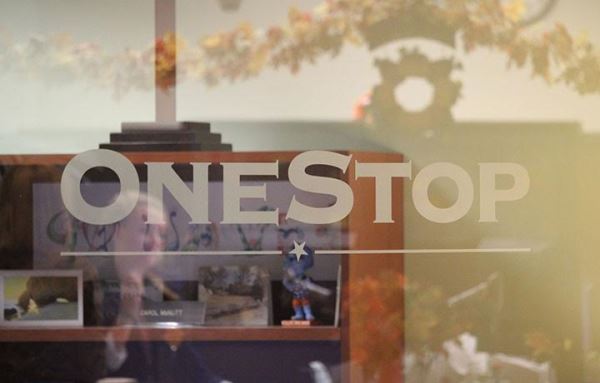
Applications, deadlines and fees.
The process of transferring to Pepperdine is not too different from the process of applying to be a freshman at Pepperdine, but the transition to campus is much more challenging.
Most new student orientations tends to be freshman centric, transfer students said. Transfers feel out of place and have a hard time making new friends outside of the transfer events. For older students, transferring credits can be a frustrating back and forth. When they lose that battle, graduation gets delayed.
“I wish I didn’t (participate in NSO events),” fall 2014 transfer Megan Klembith said. “I assumed it would be fun and a good way to meet people but the normal events weren’t very accepting of transfers. But the transfer events (Santa Monica trip and transfer info sessions) were great.”
During NSO there are one to two transfer events per day. The rest of the programming is focused on freshman students. Transfer students said they most feel awkward and out of place at the non-transfer NSO events. A Graphic survey of 51 transfers found that 67 percent believed that the transfer NSO events were helpful in their transition.
“Santa Monica was my favorite trip because we actually got to bond as transfers away from the freshman,” fall 2014 transfer Brittany King said. “It was the first time transfers got to do something fun with other transfers.”
Pepperdine administrators are trying to help transfer students on multiple fronts. Administrators have set up a transfer student advisory committee, Housing tries to place transfers with fellow transfers and transfer students have their own club convos and transfer mentors. Starting spring 2015, Seaver officials are launching a new endeavor, Transfer Families, to better help students integrate into the Pepperdine community.
“Based on the conversations I’ve had with some of them (transfer students), their main concerns are related to the academic rigor at Pepperdine, finding community or even picking a roommate,” Undergraduate Admissions Counselor Stephanie Chapman said. “I think it would be so influential to reach a hand out to these students so they know they’re not alone.”
Pepperdine already has a higher than normal loneliness rate, according to the National College Health Assessment, a survey Pepperdine students can voluntarily take every two years. Transfers students said they feel this abundantly. They come in brand new to the school but not to college. Pepperdine caters to new freshman and joining clubs, Greek Life or going abroad can be difficult for transfers.
The Graphic survey found that 39 percent of transfers feel stressed and 29 percent feel out of place. Coming in most transfers feel freshman stick with freshman and everybody else has their friend groups. The Graphic survey found that 88 percent of participants said coming in as a transfer they felt most students already had their groups, making it harder to make new friends.
“Coming in as a transfer I felt lonely and stressed,” fall 2013 transfer Mandy Williams said. “It took a few months to adjust.”
Many transfers come into Pepperdine believing that it will only take about two years to graduate. According to the Graphic survey, 63 percent of transfer students believed coming in they would graduate in two years but only 31 percent said they will. Pepperdine’s unique general education requirements often shatter this hope. Religion and humanities GE requirements usually do not transfer, transfer students said. The process to appeal the decision for a class is very tough.
The problem most students come across in the appeal process is the transferring of lower division classes. Most of the time lower division classes will not transfer for an upper division course even if the courses are the same, academic counselors in OneStop said.
Associate Dean of Students Stacy Rothberg said she believes that transfers need more information about the process, such as how to challenge a class.
“We now have a transfer student advisory committee working on making sure that incoming transfers have a good understanding of the experience here,” Rothberg said. “Sometimes people may switch their majors or they thought a class would transfer but it didn’t.”
Rothberg said the advisory committee is comprised of representation from the Office of Admission, Counseling, Student Affairs, Academic Advising, and Housing and Residence Life. There are also two student representatives, junior Mia Shinseki and senior Jessica Rodgers. The advisory committee began this fall and it serves the transfer community and helps with the transition to Pepperdine.
A very helpful transfer tool is the Transfer Club Convo, “God in Transition.”
“That’s another direct point of contact with a Pepperdine staff member for students to connect and form friendships and a place to be open about growing spiritually,” Rothberg said.
Transfer Club Convo consists of a staff member, two transfer mentors and 10 to 14 new transfers. The seven-week convo focuses on how to deal with transitioning into Pepperdine. Rothberg and Green said discussions concentrate on overcoming hurdles, getting involved and persevering through the struggles transfers face during their first semester at Pepperdine.
Rothberg said the transfer mentor program is a huge part of the recent success for transfers. Transfer mentors give guidance and advice from their experiences, Rothberg said. The time transfers spend with transfer mentors helps get them better acquainted to Pepperdine.
“Transfer mentors have helped people with their transitions and have had a positive experience,” Rothberg said.
A new transfer program will utilize transfer mentors to combat loneliness for transfer families. This program will start spring 2015.
“The transfer student advisory committee just talked about utilizing a small group program,” Rothberg said. “This would connect students in transfer families when they come in and help (transfers) make friends to begin relationships.”
These families will consist of a transfer mentor, a staff member and five to six new transfer students. Transfer families will meet at least once a month and will discuss how the transition is affecting new transfers. Transfer mentors will be in charge of making sure that they are available to help their families succeed at Pepperdine. Transfer Families will also help new transfers make friends once the semester starts.
Transfers, unlike freshman, do not pick where they live. HRL places transfers, which causes transfer students to be spread out. This year HRL placed transfer students in Shafer, Banowsky and Drescher. Last year HRL placed transfers in George Page, Shafer and Morgan.
“I think it would be a good idea to have all of the transfer students together, either in one house or all up at Drescher,” fall 2014 transfer Amber Wyatt said. “It was a bit difficult getting to know other transfer students since we were split up.”
One idea at the end of last spring was to make Shafer an all transfer house. This was to build a stronger transfer community. Enrollment differences between transfers and sophomores forced Housing to assign some returning sophomores to Shafer as well, said Reggie Green, assignments and marketing coordinator for Housing.
“My role in particular is to figure out how we can better serve transfer students when it comes to their housing experience,” Green said. “I’m also there to brainstorm ideas, having been a transfer myself I hope I can contribute to the transfer experience overall. I believe it’s important because being a transfer and transferring to Pepperdine is a unique experience. If we can provide a process that is more accommodating, educational and meets the needs of the students I believe their transition will be a lot better.”
Most of the attempts being made to help transfer students are new initiatives that haven’t been executed yet. The transfer community will see positive change when these programs are initiated, Green and Rothberg said.
“Transfers don’t usually get involved in their first semester or even first year. It makes the transition way tougher,” fall 2013 transfer Arpa Shahijanian said. “Creating a community will help them get them involved.”
Amanda McCraven completed this story in Dr. Christina Littlefield’s fall 2014 Jour 241 class.



